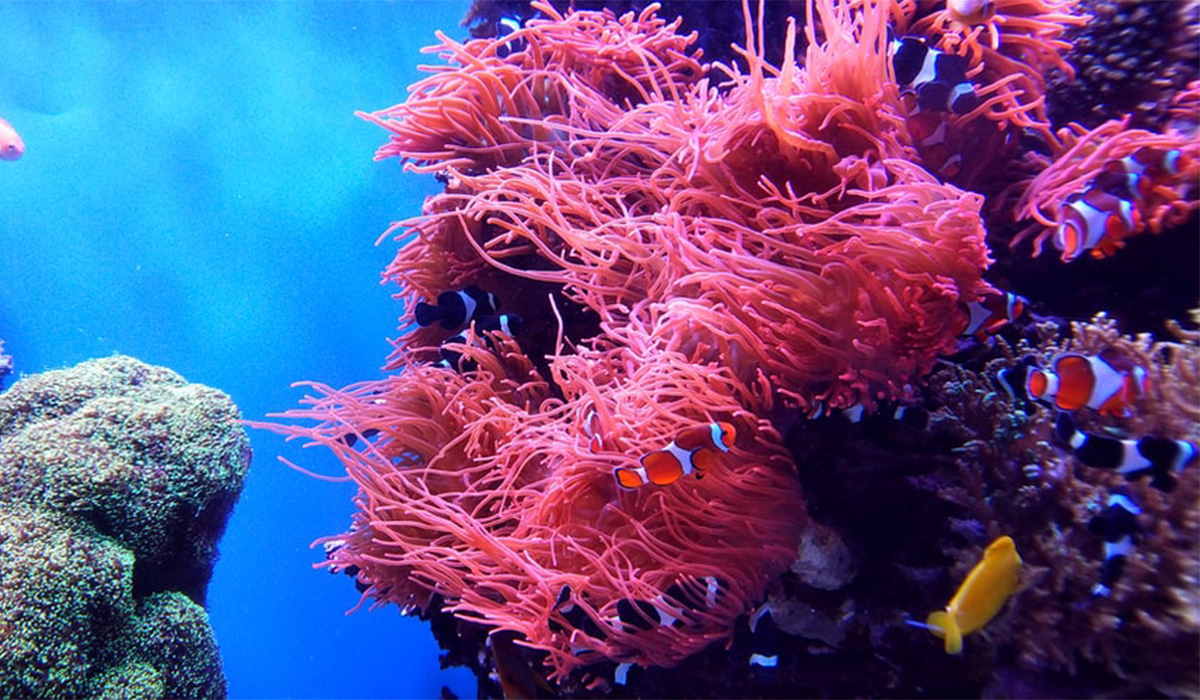In the quest to provide green innovations to make our economy sustainable, scientists have often been inspired by the creatures and processes they’ve observed on the earth's surface. But more and more attention is now focusing on the other three-quarters of our planet: seas and oceans.
In the last few years, the world’s waterways have become a new source of scientific inspiration. From hydrogen production to replacing plastics in everyday life, to manufacturing more resilient building materials, scientific researchers, startups and major industrial companies have increasingly been trying to harness the power of the sea to create the next generation of green innovations. Here’s a primer on the latest developments.
Making hydrogen
If it is produced from renewable energy sources, hydrogen and methane can be clean sources of fuel. But 96% of the world’s hydrogen and almost 100% of the methane currently come from non-renewable resources. Some sea-inspired solutions aim to change that:
- Australian and Chinese researchers have developed a high-performance rig that can produce hydrogen using seawater and the sun. Thanks to a single-atom platinum catalyst, the Ocean-H2-Rig can float on the ocean and use solar energy to split water into hydrogen and oxygen. And it does so at low cost, high efficiency, and by emitting oxygen instead of greenhouse gases.
- Microalgae have also emerged as candidates to produce hydrogen. Microalgae absorb great quantities of CO2, grow quickly, and in surfaces not suitable for agriculture. And now Indian researchers have used reactive flash volatilization (RFV) gasification, a reaction that relies on oxygen and steam to convert biomass into gases, which are then transformed into hydrogen. Experts say the hydrogen produced in this way is between 36% and 87% cleaner compared to the current best practices.
Replacing plastics
The world produces and throws away huge quantities of plastic — 300 million tons every year, half of which are single-use plastics. This plastic takes several hundred years to biodegrade, and too much of it ends up in the ocean and enters the food chain. No wonder scientists are looking to the sea for alternatives:
- Bioplastics produced using starch and similar materials have long been touted as a possible replacement for fossil-fuel-based plastics. But in countries with a shortage of fresh water, using water to produce bioplastics could be seen as a waste. That’s why Israeli researchers have devised a way to produce degradable plastic-like polymers using marine organisms that feed on algae.
- The London start-up Notpla has produced plastic-like casing using biodegradable seaweed. The company dries seaweed and grounds it to powder, then uses a secret recipe to turn it into a sticky fluid—which, when dried, becomes a plastic-like substance. But unlike plastic, it breaks down within four to six weeks—and it’s even edible!
- U.S. company Loliware has also turned its attention to algae, which it turns into edible tableware that biodegrade in six to 10 days. The company says it aims for its straws to be attractive not only because they’re carbon-negative and biodegradable but also in their price. It has already distributed them to partners like Marriott, Pernod Ricard and New York’s Museum of Modern Art.
Better materials
From clams to shrimp, evolution has given some sea creatures shapes and features that have protected them for millions of years. And it turns out, there’s a fair bit we could replicate:
- The mantis shrimp has hammer-like protuberances that are so powerful it can easily crush crabs, clamshells and other creatures it feeds on. That’s because the layers of the material they’re made of are not neatly stacked on top of each other but twisted, so they absorb and dissipate the energy caused by the bashing without cracking. Researchers at Purdue University have developed new materials with the same structure that might offer unprecedented resilience, with potential applications that include buildings and airplanes. Some researchers think it could even be used to absorb a bullet's energy in body armors…
- In the UK, scientists have looked at seashells to create stronger building and bone replacement materials. They combined calcite crystals with polystyrene particles, creating a material that can absorb energy and enhance durability.
- Similarly, German engineers have found a way to develop stronger cement by drawing inspiration from sea urchin spines. While they are made of calcite, a fairly brittle material, sea urchin spines are very resistant because of their structure: they’re surrounded by softer areas of softer calcium carbonate, which absorbs shocks and prevents them from snapping. The researchers found a material that could adhere to cement particles and calculated that they could create cement that is between 40 and 100 times stronger than the mixes we currently use.
Energy storage
Harnessing the power of renewable sources, which are often intermittent, requires innovative ways to store energy – so we can use it when we most need it. Here too, the sea is offering scientists some inspiration:
- The lithium batteries found in our devices run on solvents that could be flammable and potentially harmful. So, a team of engineering researchers at Ohio State University created a battery that replaces those solvents with… seawater. They say this aqueous battery not only presents fewer safety concerns but could even have a longer life than the ones currently in use.
- Because they can store large volumes of energy, redox flow batteries are seen as key to stow away energy obtained from renewable sources. And now, researchers think they have found an efficient way to make them with an ingredient found in shrimp shells called chitin. Using waste as one of their key ingredients, these batteries provide good performance at a very low cost and abundant supply.

